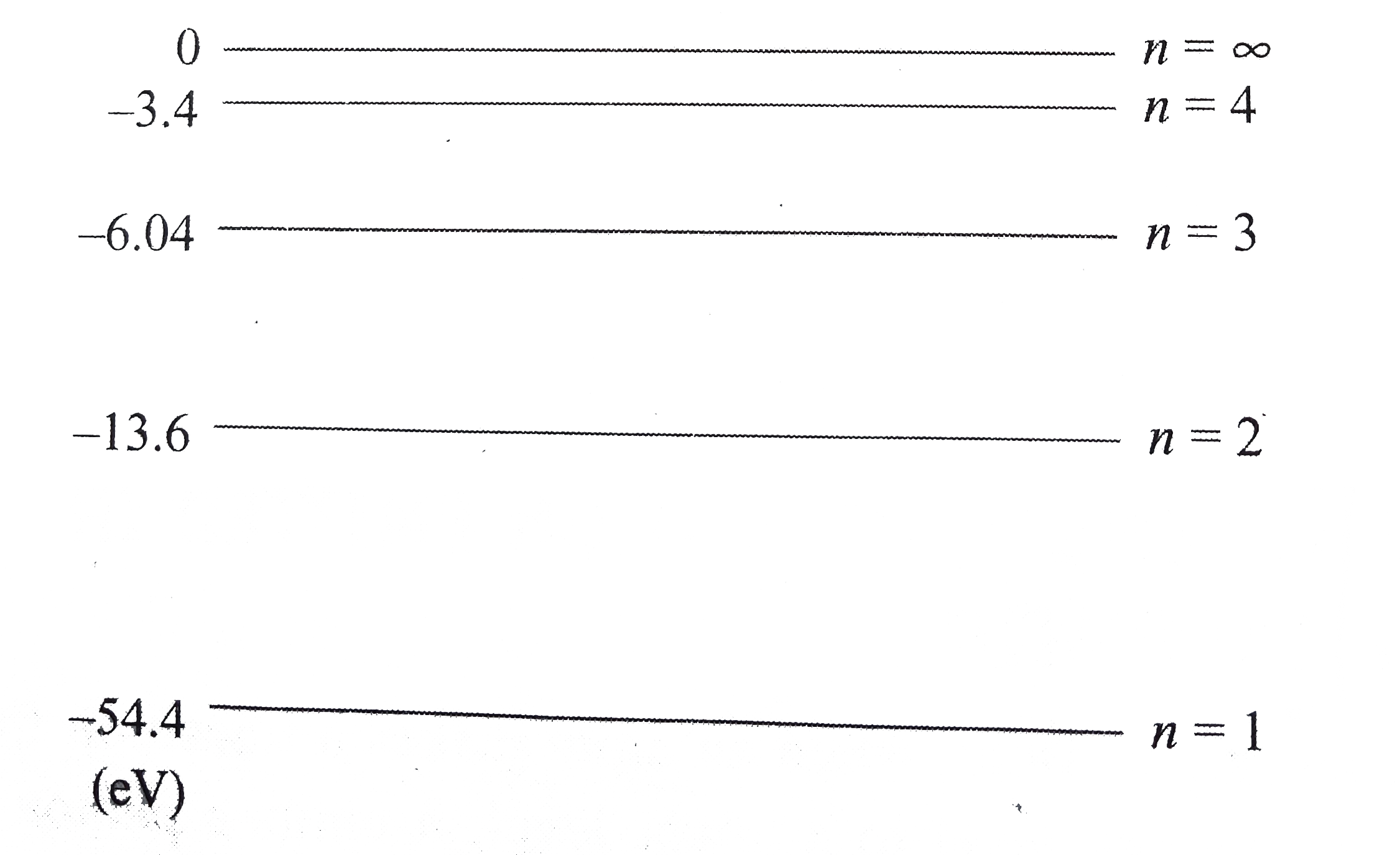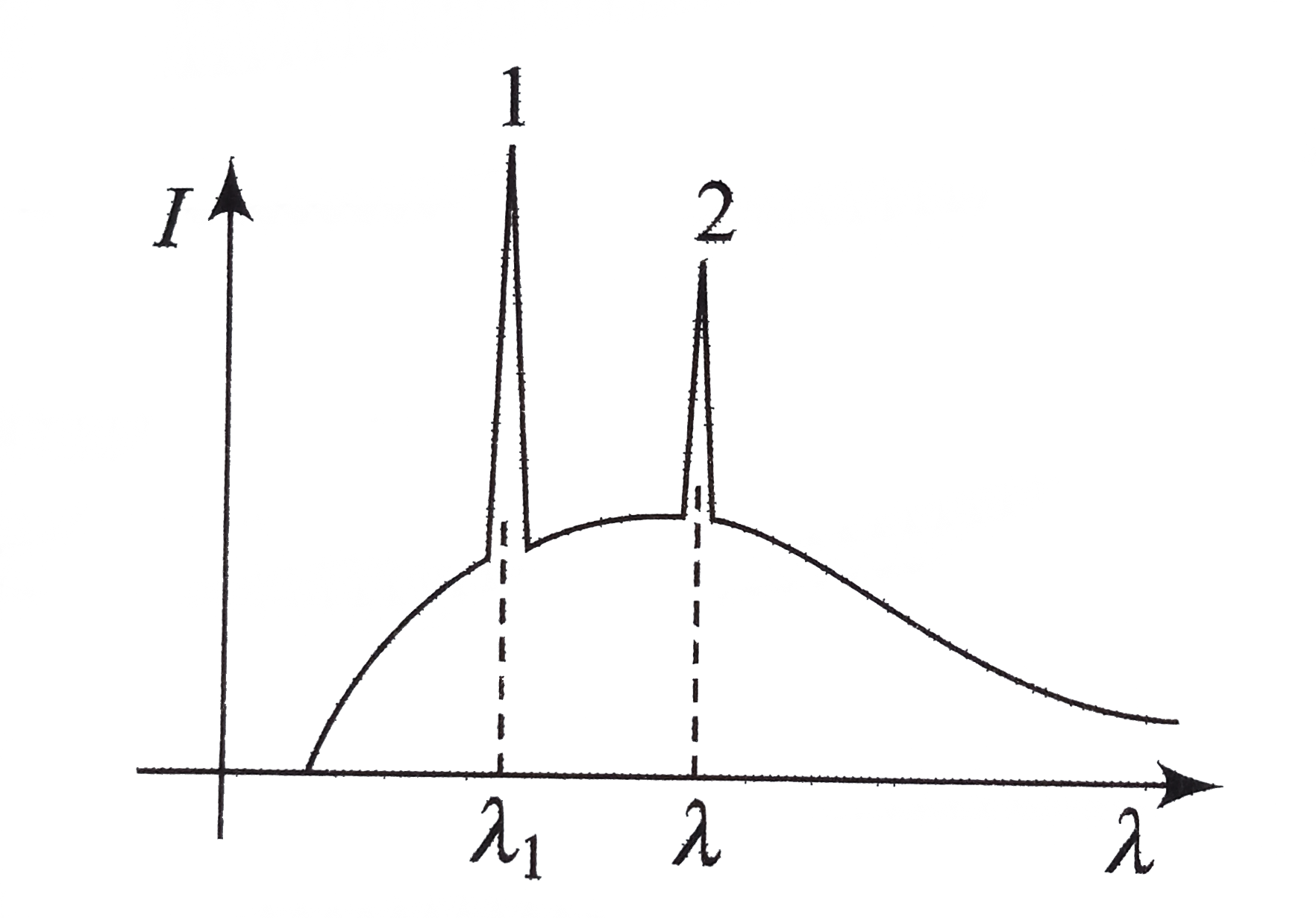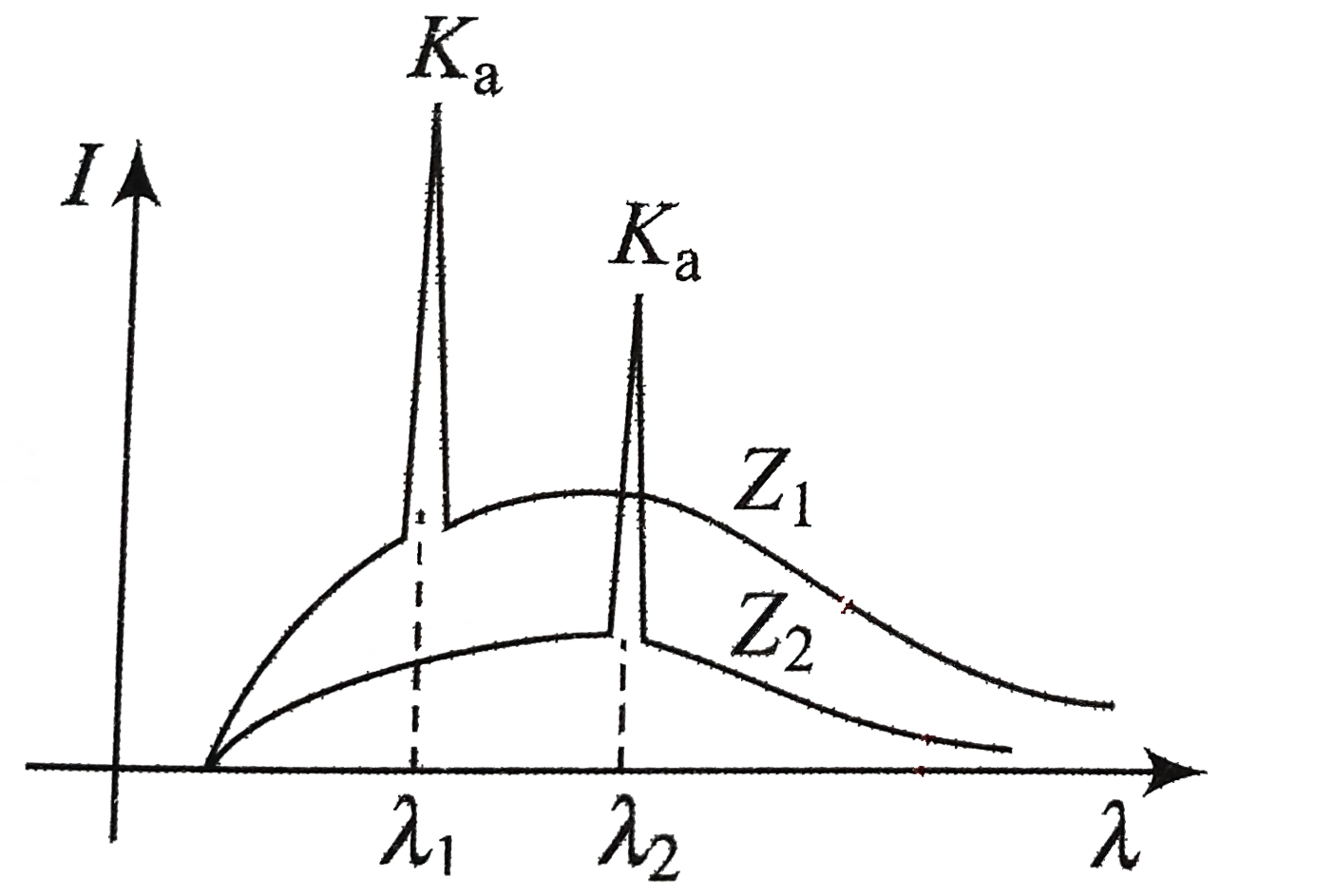Complete Solutions to Illustration of chapter ATOMIC PHYSICS of Class 12 book with complete answers and questions
| Class 12 | PHYSICS |
| Chapter | ATOMIC PHYSICS |
| CENGAGE PHYSICS | Illustration |
| Number Of Questions | 50 |
| Academic Year | 2023-24 |
The electron in a hydrogen atom makes a transition `n_(1) to n_(2), where n_(1) and n_(2)` are the principal quantum numbers of the two energy states. Assume Bohr's model to be valid. The time period of the electron in the initial state is eight time that in the final static. what are the possible value of `n_(1) and n_(2)`?
04:54View SolutionHow many time does the electron go round the first bohr orbit of hydrogen atoms in `1 s`?
02:42View SolutionWhat is the angular momentem of an electron in Bohr's hydrogen atom whose energy is `- 3.5eV`?
02:13View SolutionIf the average life time of an excited state of hydrogen is of the order of `10^(-8) s`, estimate how many whits an alectron makes when it is in the state `n = 2` and before it suffers a transition to state` n = 1 (Bohrredius a_(0) = 5.3 xx 10^(-11)m)`?
05:05View SolutionConsider energy level diagram of a hydrogen atom.How will the kinetc energy and potential energy of electron moves from a lower level to a higher level?
05:12View SolutionSoppose potential energy between electronand proton at seperation `r` is given by `U = klog r, where k` is a constant. For such a hypothetical hydrogen atom , calculate the radins of nth Bohr and its energy level
05:49View SolutionDetermine the minimum wavelength of a photon the can cause ionization of He ^(+) ion.
03:59View SolutionFind the quantum number `n` corresponding to the excited state of He^(+) ion if on transition to the ground state that ion emits two photons in succession with wavelengths state that ion emits two photons in succession with wavelengths`1026.7 and 304Å. (R = 1.096 xx 10^(7)m^(_1)`
03:33View SolutionA gas hydrogen like atoms can absorb radiations of `68eV`. Consequently, the atoms emit radiations of only three different wavelengths. All the wavelengths are equal or smaller than that of the absorbed photon.
(`a`) Determine the initial state of the gas atoms.
(`b`) Identify the gas atoms.
(`c`) Find the minimum wavelength of the emitted radiation.
(`d`) Find the ionization energy and the respective wavelength for the gas atoms.06:47View SolutionFind the ratio of ionization energy of bohr 's hydrogen atom doubly liothium ion `(Li^(2))`
04:20View SolutionThe Bohr moden does not apply when more than one electron orbit the nucleues because it does not account for the electrostatic force that the electron exert on one another.For instance , an electrically neutral lithium atom `(Li)` contains three electrons in orbit around a nucleus that includes three protons `(Z = 3)`, and Bohr's model can be used for the doubly charged positive ion of lithium `(Li^(2)^(+))` that results when two electrons are removed from the neutral atom, leaving only one electron to orbit the nucleus . Obtain the ionization energy that is needed to remove the remaining electron from `(Li^(2)^(+))`
03:55View SolutionThe energy levels of a hypothetical one electron atom are given
`E_(n) = - (18.0)/(n^(2)) eV`, where ` n = 1,2,3` …
a Cumpete the four lowest energy levels and construct the energy level diagram .
b What is the excitation potential of the state ` n = 2`?
c What wavelengths `(Å)` can be emitted when these atoms in the ground stste are bombarded by electron that have been accelerate through a potential difference of `16.2 V`
d If these atoms are in the ground state , can they absorb radiation having a wavelength of `2000 Å` ?
e what is the photoclectric threshold wavelength of this atom ?16:52View SolutionA doubly ionized lithium atom is hydrogen like with atomic number `3`. Find the electron in `(Li^(+ +))` from the first to thired Bohr orbit . The ionization energy of the hydrogen atom is `13.6 eV`.
03:22View SolutionA single electron orbits a stationary nucleus of charge `+ Ze`, where `Z` is a constant and `e` is the magnitude of electronic charge . It requires `47.2 eV` to excite . Find
a the value of `Z`
b the energy required to excite the electron from the third to the fourth Bohr orbit.
the wavelength of electromagnetic rediation required to remove the electron from the first Bohr orbit to infinity.
d Find the `KE,PE`, and angular momentum of electron in the first Bohr orbit.
the redius of the first Bohr orbit
[The ionization energy of hydrogen atom `= 13.6 eV` Bohr radius `= 5.3 xx 10^(_11) m`, "velocity of light" `= 3 xx 10^(-8)jm s ^(-1)`, Planck's constant `= 6.6 xx 10^(-34)j - s]`11:01View SolutionIn atension from state `n` to a state of excitation energy `10.19 eV`, hydrogen atom emits a `4890 Å` photon. Etermine the binding energy of the initial state.
05:17View SolutionThe first excitation potential of a hypothetical hydrogen- like atom is `15 V`. Find the third excitation potential of the atom.
03:30View SolutionThe energy level excitation potential of a hydrogen -like atom is shown in Figure

a Find the value of `Z`
b If initially the atom is in the ground state ,then
(i) determine its excitation potential, and
m (ii) determine its ionization potential.
c Can it absorbe a photom of `42 eV`?
d Can it absorbe a photom of `56 eV`?
e Calculate the radius of its first Bohr orbit.
f Calculate the kinectic and potential energy of an electron in the first orbit.12:02View SolutionBrackett series of lines are producted when electrons excited t high energy level make transitions to the `n = 4` level.
a Determine the longest wavelength in this series.
b Determine the wavelength that corresponds to the transition from `n_(f) = 6 to n_(i) = 4`.03:41View SolutionElectrons of energy `12.09 eV` can excite hydrogen atoms . To which orbit is the electron in the hydrogen atom raisd and what are the wavelengths of the radiations emitted as it dropes back to the ground state?
06:34View SolutionA hydrogen atom is in the third excited state. It make a transition to a different state and a photon is either observed or emitted. Determine the quantum number `n` of the final state and the energy energy of the photon If it is
a emitted with the shortest possible wavelength.
b emitted with the longest possible wavelength and
c absorbed with the longest possible wavelength.08:46View SolutionThe Bamber series for the hydrogen atom corresponds to electron that terminal in the state of quantum number `n = 2`.
a Find the longest wavelength photon emitted and determine its energy.
b Find the shortest wavelength photon emitted in the balmer series.05:54View SolutionHow many different wavelengths, may be observed in the spectrum from a hydrogen sample if the atom are excited to be state withprincipal quantum number `n` ?
02:07View SolutionA positronium "atom" is a system that consists of a positron and an electron that orbit each other. Campare the wavelengths of the spectral lines of positronium with those of ordinary hydrogen.
04:42View SolutionA muan is an unstable elementary partical whose mass `(mu^(-))` can be captured by a hydrogen nucleus (or proton) to from a muonic atom.
a Find the redius of the first Bohr orbit of this atom.
b Find the ionization energy of the atom.06:00View SolutionA particle known as mu meson has a charge equal to that of no electron and mass `208`times the mass of the electron B moves in a circular orbit around a nucleus of charge `+3e` Take the mass of the nucleus to be infinite Assuming that the bohr's model is applicable to this system (a)drive an expression for the radius of the nth Bohr orbit (b) find the value of a for which the radius of the orbit it appropriately the same as that at the first bohr for a hydrogen atom (c) find the wavelength of the radiation emitted when the u - mean jump from the orbit to the first orbit
09:31View SolutionA neutron which is going to collde head on to a stationary `H` atom has intial kinetic energy of `24.5 eV`. Discuss different possibilites of collsion.
08:21View SolutionIn the figure , what type of collision can be possible , if `K = 14 eV, 20.4 eV,22 eV, 24.18 eV,(elastic // inelastic // perfectly inelastic).
 09:33View Solution
09:33View SolutionA `He^(+)` ion is at rest and is in ground state. A necutron with intial kinetic energy`K` collides heads on with the `He^(+)` ion. Find minimum value of `K` so that there can be an inelastic collision between these two particals.
 09:33View Solution
09:33View SolutionIn the previous question , find minimum value of `K` so that all types of collisions are piossible.
01:53View SolutionAn `H` atom in ground state is moving with initial kinetic energy `K` .It collides head on with `He ^(+)` ion in ground state kept at rest but free to move. Find minimum value of `K` so that both the particles can excite to their first excited state.
07:52View SolutionA moving hydrogen atom makes a head-on collision with a stationary hydrogen atom. Before collision, both atoms are in ground state and after collision they move together . What is the minimum KE of an atom, such that one of the atoms reaches one of the excitation state.
05:20View SolutionA neutron with an energy of `4.6 MeV` collides elastically with proton and is retarded. Assuming that upon each collision the neutron is deflected by `45^(@)`, find the number of collisions which will reduce its energy to `0.23 eV`.
07:54View SolutionExplain why nearly all `H` atoms are in the ground state at room temperature and hence emit no light.
03:27View SolutionConsider a hydrogen-like atom whose energy in nth excited state is given by
`E_(n) = -(13.6 Z^(2))/(n^(2))`
When this excited makes a transition from excited state to ground state , most energetic photons have energy
`E_(max) = 52.224 eV`. and least energetic photons have energy
`E_(max) = 1.224 eV`
Find the atomic number of atom and the intial state or excitation.07:37View SolutionA gas of identical hydrogen-like atoms has some atoms in the lowest in lower (ground) energy level `A` and some atoms in a partical upper (excited) energy level `B` and there are no atoms in any other energy level.The atoms of the gas make transition to higher energy level by absorbing monochromatic light of photon energy `2.7 e V`.
Subsequenty , the atom emit radiation of only six different photon energies. Some of the emitted photons have energy `2.7 e V` some have energy more , and some have less than `2.7 e V`.
a Find the principal quantum number of the intially excited level `B`
b Find the ionization energy for the gas atoms.
c Find the maximum and the minimum energies of the emitted photons.14:37View SolutionA hydrogen-like atom (aatomic number `Z`) is in a hight excited state of quantum number `n` . This excited atom can make a transition to the first excited state by successively emitting two proton of energy `10.20 e V and 17.00 e V`, respectively.
Alternatively , the atom from the same excited state can make a transition to the second excited state by successively emitting two proton of energy `4.25 e V and 5.954 e V`, respectively. Determine the value of `n and Z` (ionization energy of hydrogen atom `= 13.6 eV)`05:49View SolutionElectron in a hydrogen-like atom `(Z = 3)` make transition from the forth excited state to the third excited state and from the third excited state to the second excited state. The resulting radiations are incident potential for photoelectrons ejested by shorter wavelength is `3.95 e V`.
Calculate the work function of the metal and stopping potiential for the photoelectrons ejected by the longer wavelength.10:02View SolutionThe rediation emitted when an electron jumps from `n = 3 to n = 2` orbit in a hydrogen atom falls on a metal to produce photoelectron. The electron from the metal surface with maximum kinetic energy are made to move perpendicular to a magnetic field of `(1//320) T` in a radius of `10^(-3) m`. Find (a) the kinetic energy of the electrons, (b) Work function of the metal , and (c) wavelength of radiation.
08:07View SolutionAn X-ray tube operates at 20 kV. A particular electron loses 5% of its kinetic energy to emit an X-ray photon at the first collision. Find the wavelength corresponding to this photon.
03:44View SolutionAn X-ray tube operates at `20k V`. Find the maximum speed of the electron strinking the anode , given the charge of electron is `1.6 xx 10^(-19)` coulomb and mass of electron is `9 xx 10^(-31) kg`.
03:00View SolutionThe short-wavelength limit shifts by 26 pm when the operating voltage in an X-ray tube is increased to 1.5 times the original value. What was the original value of the operating voltage?
07:27View SolutionIn figure find which is `K_(a) and K_(beta)`
 03:05View Solution
03:05View SolutionIn figure find which is `K_(a) and L_(alpha')`
 02:51View Solution
02:51View SolutionThe `K_(alpha)` X-ray emission line of lungsten accurs at `lambda = 0.021 nm`. What is the energy difference between `K`and `L` levels in the atom?
02:33View SolutionWhen `0.50` Å X-ray strike a material , the photoelectron from the `K` shell are observed to move in a circle of radius `2.3 nm` in a magnetic field of `2 xx 10^(-2)` tesle acting perpendicular to direct of emission of photoelectron . What is the binding elergy of `k-shell` electron?
05:55View SolutionIf the radiation of `Mo (Z = 42)` has a wevelength of `0.71Å`, calculate wevelength of the corresponding radiation of `Cu,i.e. , k_(alpha)for Cu (Z = 29) assuming b = 1`.
03:54View SolutionCompare `Z_(1) and Z_(2)`
 03:20View Solution
03:20View SolutionA cobalt target `(Z = 27)` is bomberded with electron and the wavelength of its characteristic spectrum are measured . A second , fainter characcteristic spectrum is also found because of an impurity in the target. The wevelength of the `K_(alpha)` lines are 178.9 pm (cobalt) and `143.5 pm` (impurity). What is the impurity?
04:37View SolutionAn X-ray tube with a copper target is found to be emiting lines other than those due to copper. The `K_(alpha)` line of coper is known to have a wavelength `1.5405 Å` and the other two `K_(alpha)` lines observed have wavelengths `0.7090 Å and 1.6578 Å` Identify the impurities.
06:16View SolutionThe `K`-absorption edge of an unknown element is `0.171 Å`
a. Identify the element.
b. Find the average wavelength of the `K_(alpha),K_(alpha),K_(beta),K_(gamma)` lines.
c.
If a `100 e V` electron strikes the target of this element , what is the minimum wavelength of the x-ray emitted?07:40View Solution
Illustration questions and complete solutions for chapter ATOMIC PHYSICS of CENGAGE PHYSICS (HINGLISH) of Class 12
